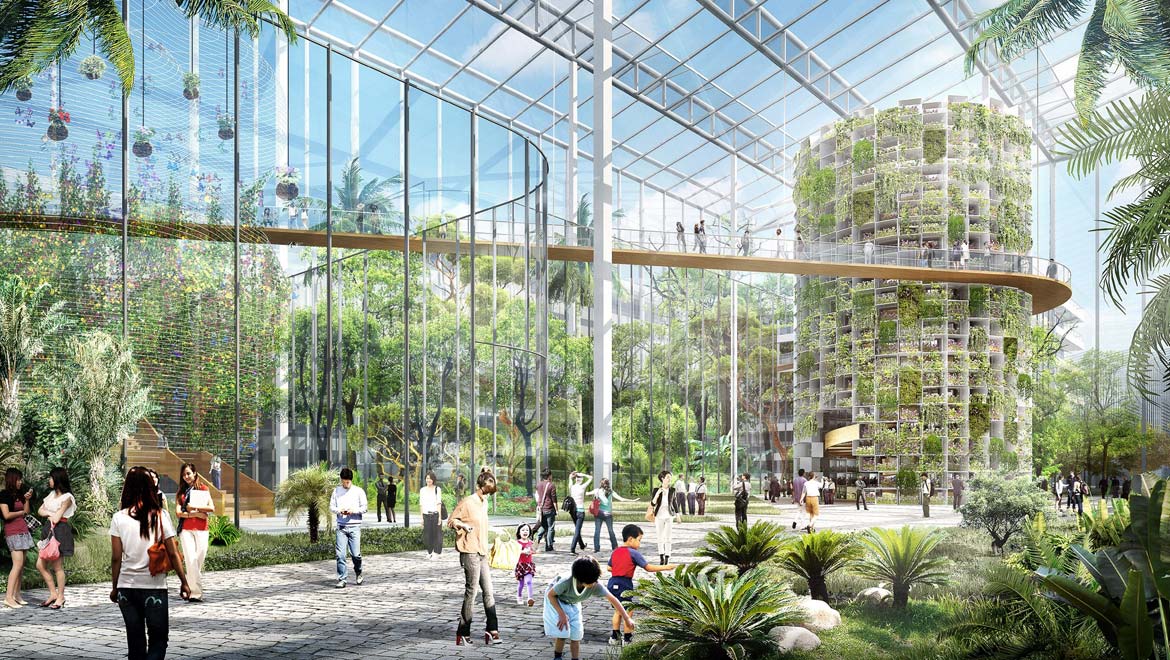
Vertical Gardens and Urban Farming: A Sustainable Solution for Urban Environments
Introduction
Vertical Gardens and Urban Farming have gained increasing attention in recent years as cities are faced with the challenges of limited space and environmental sustainability. This article explores the historical background, key concepts, main discussion points, case studies, current trends, challenges, future outlook, and the significance of Vertical Gardens and Urban Farming in addressing food security and sustainability challenges in urban environments.
Historical Background
The concept of Vertical Gardens and Urban Farming can be traced back to ancient civilizations such as the Hanging Gardens of Babylon. However, it is in the recent past that these practices have gained momentum. The rise of urbanization and the increasing demand for food in densely populated areas have led to the development of innovative solutions like Vertical Gardens and Urban Farming.
Key Concepts and Definitions
Vertical Gardens refer to the practice of growing plants vertically on walls or structures, utilizing limited space in urban areas. Urban Farming, on the other hand, involves the cultivation of crops and raising of animals within cities. Key terms and concepts related to these practices include hydroponics, which is a method of growing plants without soil, and rooftop gardens, which are green spaces created on the rooftops of buildings.
Main Discussion Points
Benefits of Vertical Gardens and Urban Farming
One of the main benefits of Vertical Gardens and Urban Farming is increased food production in urban areas. By utilizing vertical space, these practices allow for the cultivation of a larger quantity of crops in a smaller footprint. They also contribute to improved air quality and reduced urban heat island effect by absorbing carbon dioxide and releasing oxygen. Additionally, Vertical Gardens and Urban Farming make efficient use of limited space, allowing for the production of fresh, local, and sustainable food in densely populated cities.
Design and Implementation of Vertical Gardens and Urban Farms
Different types of vertical gardens, such as living walls or green facades, can be implemented in urban environments. These structures not only provide aesthetic appeal but also help in reducing energy consumption by providing insulation. Techniques and technologies like hydroponics or aquaponics are used in urban farming to optimize water and nutrient usage. Selecting appropriate plants and crops that are suitable for urban environments is crucial, considering factors such as limited sunlight and space constraints.
Social and Community Impact of Vertical Gardens and Urban Farming
Vertical Gardens and Urban Farming have a significant social and community impact. These practices enhance community engagement and education on sustainable agriculture, promoting awareness about the importance of local food production. They also create opportunities for job creation and entrepreneurship, empowering individuals to become self-sufficient. Moreover, Vertical Gardens and Urban Farming address food security issues by providing access to fresh produce in urban areas where access to nutritious food is limited.
Case Studies or Examples
Real-world examples of successful Vertical Gardens and Urban Farms include The High Line Park in New York City, Sky Greens in Singapore, and The Rooftop Farm at Brooklyn Grange. Each case study showcases unique benefits and challenges, such as the transformation of unused space into vibrant green areas, innovative vertical farming techniques, and the integration of agriculture into urban landscapes.
Current Trends or Developments
Recent trends in Vertical Gardens and Urban Farming include the increasing popularity and adoption of these practices worldwide. The integration of technology, such as vertical farming towers or automated irrigation systems, has made these practices more efficient and scalable. Collaboration between architects, urban planners, and farmers has resulted in the incorporation of green spaces in urban development projects, creating a harmonious balance between nature and urbanization.
Challenges or Controversies
Vertical Gardens and Urban Farming face challenges such as limited access to space and high implementation costs. The requirement of specialized equipment and infrastructure can make these practices financially inaccessible for some communities. Additionally, there are concerns about potential environmental impacts, such as energy consumption for artificial lighting or water usage for irrigation. Debates also exist regarding the scalability and feasibility of these practices for large-scale food production.
Future Outlook
Looking ahead, advancements in technology and innovation hold great potential for optimizing vertical farming systems. The integration of vertical gardens and urban farms into urban planning and architecture can transform cities into sustainable and green environments. With the growing recognition of the importance of sustainable agriculture, there is also potential for policy changes and incentives to promote Vertical Gardens and Urban Farming in urban areas.
Conclusion
Vertical Gardens and Urban Farming offer a sustainable solution for addressing food security and sustainability challenges in urban environments. Through increased food production, improved air quality, efficient land use, and community engagement, these practices have the potential to create a more resilient and self-sufficient urban landscape. As cities continue to grow and face environmental challenges, Vertical Gardens and Urban Farming provide a promising path towards a greener future.
References
Smith, J. (2018). Vertical Gardens: The Future of Urban Farming. Sustainable Cities and Society, 38, 230-240.
Despommier, D. (2010). The Vertical Farm: Feeding the World in the 21st Century. Macmillan.
Viljoen, A., & Bohn, K. (2013). Second Nature Urban Agriculture: Designing Productive Cities. Routledge.